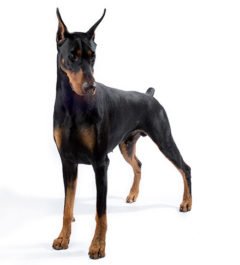Newfoundland
BREED INFO
- Group – Working
- Height – 25-29 inches at the shoulder
- Weight – 45-68 KG
- Life Span – 9-10 years
The Newfoundland is a calm and dignified breed. They’re great with children and are very happy living in a very social family. This is a big breed, so he needs a lot of space to get out and exercise.
History

There is much debate about the exact origin of the Newfoundland breed. Some people believe that they descended from a cross between indigenous Indian and/or Eskimo dogs and the Pyrenean Mountain Dog type (now the Great Pyrenees) that came to the Canadian coast with Basque fishermen. Others say that Newfies go back to ancient Tibetan Mastiffs that came across the Polar region with migrating tribes, or to dogs brought by the Vikings to North America. A careful survey conducted by a British naval officer in 1768 revealed that the Indian tribes of northeastern Canada had no native dogs of any kind. However, by the end of the 1700s, Newfoundlands were well-established in that region. British fishing vessels were common visitors to the Maritime Islands starting in the 1600s, and the sailors often usually brought dogs with them on their ships. Modern thought is that local fishermen started breeding small native Canadian dogs with the large European imports as soon as they arrived in their fishing ports. The Portuguese Water Dog and Great Pyrenees are still presumed to have been part of the mix, which ultimately led to the Lesser St. John’s Dog (which developed into the Labrador Retriever) and the Greater St. John’s Dog (which developed into the Newfoundland).
Regardless of its precise heritage, the Newfoundland was bred to be a true working dog, equally at home in water and on land. Records show that brave Newfoundlands saved many men, women and children from drowning at sea by carrying lifelines to shipwreck survivors off the harsh Canadian coast. Newfoundlands helped fishermen haul fish-laden nets from sea to ship to shore – a role less spectacular than sea rescues but equally valuable to their owners. Newfies excelled in performing land tasks as well, such as pulling carts filled with fish to markets and packing sheds, hauling logs for lumbermen, dragging wagons laden with fuel from forest to village in the winter and carrying supplies as a pack animal. They powered blacksmiths’ bellows and turners’ lathes. They acted as couriers between fishing boats at sea. They were large enough, strong enough and bold enough to plunge into the icy ocean unaided and carry drowning adults to land. They developed sufficient lung capacity and coat protection to survive and swim great distances in freezing waters. The tasks asked of Newfoundlands were among the most demanding and arduous of anything ever required of a domestic dog, yet they performed their duties reliably, without hesitation or complaint.
Eventually, Newfoundlands found their way to England, probably on fishing boats, where they were extensively bred and became quite popular. Thereafter, they were brought to America. In 1804, a Newfie named Seaman accompanied Meriwether Lewis up the Missouri River. In 1919, a single Newfie rescued 20 shipwrecked people by pulling their lifeboat to shore. Newfoundlands served in World War II by hauling supplies in Alaska and the Aleutian Islands. The Newfoundland Club of America was founded in 1930 and is the parent club of the breed in this country. In America today, the Newfoundland is primarily a companion dog, used infrequently for fishing or rescue work. He excels in backpacking, water trials, competitive obedience, weight pulling and carting competitions. He is an impressive presence in the conformation show ring and is a capable guardian and watch dog. Newfies are known to be protectors and playmates of children, with whom they are exceptionally gentle.
Personality and Temperament
Newfoundlands are gentle and friendly dogs. They will protect their family when needed.

This breed will be a good friend to any other dog, animal, child, or visitor as long as treated with respect.
Hair, Care and Grooming
The adult Newfoundland has flat, water-resestant, double coat. The outer coat is coarse, moderately long and full, either straight, or with a wave. The undecoat is soft and dense. The Newfoundland requires regular grooming with a brush and comb to prevent tangles.
Health
This large purebred breed is no stranger to disease. The Newfoundland is prone to Sub-Aortic Stenosis, hip dysplasia, elbow dysplasia, gastric torsion, and several common eye problems. As well, the Newfoundland can suffer from Von Willebrand’s Disease, an abnormal bleeding disorder, as well as epilepsy.
Training and Activity
This breed is very sensitive to the tone of your voice. Therefore, training should take a calm and consistent approach.

The Newfoundland loves to swim and should have long walks only as an adult.
Feeding
With a dog this big, you can expect a hearty appetite. Feed your Newf (as it is lovingly referred to) a diet of a diet rich in taurine, omega-3 fatty acids, arginine, calcium, phosphorous, and iodine. Fish is a great source for all these nutrients, and Newfoundland dogs love it (not surprising, seeing where the breed originated from).






